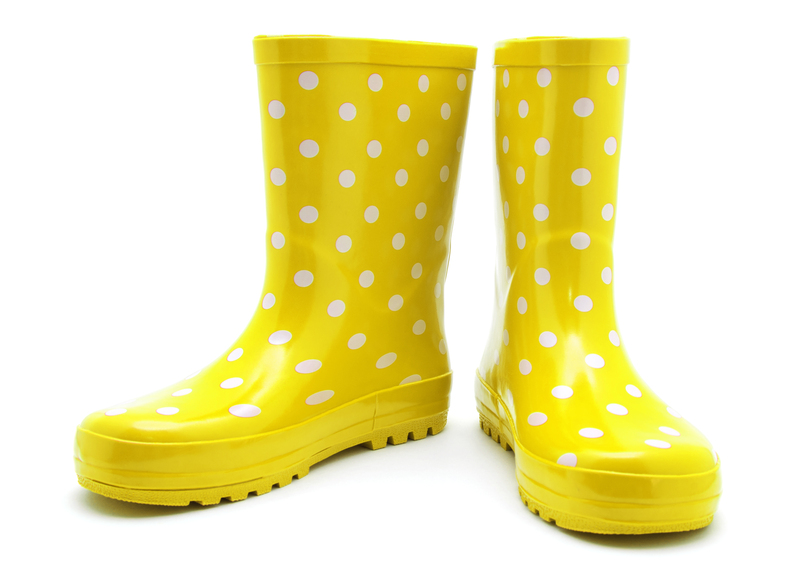Moving House Simplified: Declutter for a Hassle-Free Experience
Planning to move house? If you're like most people, you're probably feeling a mix of excitement and overwhelm. From packing boxes to organizing logistics, moving can seem daunting. However, there's one secret to ensuring a smooth, stress-free move: decluttering.
In this comprehensive guide, we'll unravel the best strategies to simplify your house move by decluttering. By the end, you'll know how to approach your move with confidence--and maybe even enjoy the process!
Why Decluttering Matters Before Your House Move
Moving house is the perfect opportunity to evaluate what you truly need and use. Decluttering before moving not only lightens your load but also saves you time and money. Here's why it's crucial:
- Saves Money: The less you move, the less you pay for packing materials, movers, or truck rentals.
- Reduces Stress: Unpacking is faster and easier when you have fewer, more organized possessions.
- Creates a Fresh Start: Arrive in your new home clutter-free, organized, and ready to settle in.

Start Early: The Key to a Seamless Move
One of the most common moving mistakes is leaving packing and decluttering to the last minute. Begin your clutter-clearing journey several weeks--or even months--before your moving date. This gives you time to sort, sell, and donate without feeling rushed.
Step-By-Step Guide to Decluttering for a Hassle-Free Move
Step 1: Create a Decluttering Plan
Before you touch a single box, write down your goals. Which rooms tend to accumulate the most clutter? Do you have a deadline for each area? Assign tasks to family members, set realistic timelines, and keep track of progress. If you're moving out of a larger house, consider tackling one room or category (like books, clothing, or kitchenware) per week.
Step 2: Gather Your Supplies
- Sturdy boxes (in small, medium, and large sizes)
- Garbage bags for donations and trash
- Labels and markers
- Tape and packing materials
Staying organized from the start will make moving house and decluttering much easier.
Step 3: The Four-Box Method
As you sort items, use the popular four-box method:
- Keep: For items you use regularly and love.
- Donate or Sell: For items in good condition that others can use.
- Recycle: For paper, electronics, or other recyclables.
- Trash: For broken or unusable items.
Move from room to room with these boxes, making quick decisions. Be honest with yourself: If you haven't used it in a year, it's probably time to let it go.
Step 4: Tackle the Most Cluttered Areas First
Some common clutter hot-spots include:
- Garages and basements: Often used for long-term storage.
- Kitchens: Full of duplicate gadgets and expired foods.
- Wardrobes: Clothes that no longer fit your size or style.
- Offices: Out-of-date paperwork and tangled tech accessories.
Addressing these areas early on will make the rest of your house move much simpler.
Decluttering Tips for Every Room
Decluttering the Kitchen
- Toss: Expired foods, mismatched containers, broken utensils.
- Donate: Appliances you rarely use.
- Streamline: Only keep gadgets and cookware you use regularly.
Clearing Out Bedrooms and Closets
- Assess: If you haven't worn an item in over a year, consider letting it go.
- Seasonal switch: Pack off-season clothes in clearly labeled boxes.
- Donate: Clothing and shoes in good condition.
Organizing the Living Room
- Cut down: Limit books, DVDs, and decor to those that truly add value.
- Bundle electronics: Keep relevant cords and remotes together.
- Sentimental items: Display your favorites, but store or pass along the rest.
Declutter the Bathroom
- Dispose: Empty bottles, expired medications, and old makeup.
- Donate: Unused toiletries to shelters.
- Use baskets: To keep essentials sorted for an easy move.
How to Decide What to Keep or Let Go
Making decluttering decisions can be tough. Use these guidelines to help:
- Have you used it in the past year?
- Does it have sentimental value or a specific purpose?
- Is it broken, outdated, or a duplicate?
- Will you have space for it in your next home?
If in doubt, let it out! Moving house is your chance to break free of excess baggage.
Maximise Value: Sell Unwanted Items
Moving house simplified doesn't just mean throwing things away. You can earn extra cash by selling gently used items. Here's how:
- Online platforms: Try eBay, Facebook Marketplace, or Gumtree for electronics, furniture, and collectibles.
- Garage sales: A great way to sell household goods in bulk.
- Consignment stores: For higher-end clothes or decor.
Give Back: Donate to Charity
Decluttering for your move is a chance to be eco-friendly and charitable. Donate usable clothes, cookware, books, and toys to local charities, shelters, or community groups. Make sure you check donation guidelines, especially for electrical items or furniture.
Dispose Responsibly: Recycle and Trash
Some items aren't fit for sale or donation--think broken electronics, expired makeup, and paperwork with sensitive information. Research your local council's recycling procedures for:
- Electronics (e-waste)
- Batteries and bulbs
- Hazardous household chemicals
- Shredding sensitive documents
Always dispose responsibly to minimize your move's environmental impact.
Packing After Decluttering: Tips for an Organized Move
Packing Room by Room
Once everything's sorted, packing becomes much simpler--and faster. Pack similar items together, label every box, and create a master inventory list. A well-organized pack means a straightforward unpack later!
Box Essentials for Moving Day
- Change of clothes
- Toiletries and medication
- Important documents
- Phone charger
- Snacks and water
Set aside these essentials--don't pack them in the moving van!
Hiring Moving Services? Decluttering Saves You Money
Did you know most professional movers charge by weight or number of boxes? By decluttering before your move, you'll need fewer boxes and spend less on moving costs. Some moving companies even offer packing services. You'll pay less if they're only packing what really matters.
How Decluttering Eases Unpacking at Your New Home
Imagine this: you arrive at your fresh new home, and every item you unpack has a purpose and a place. No junk, no random boxes to store--just belongings you want and use.
- Faster set-up: Unpacking goes quickly when you've only kept essentials.
- Less stress: There's no need to find space for clutter you never wanted in the first place.
- A new beginning: Your new home feels tidier and more spacious.
Involve Your Family: Make Decluttering a Team Effort
If you have children or housemates, make decluttering a collaborative process. Assign everyone a room or category, and let kids choose which toys and books to keep. Moving house can be a positive teaching moment about mindful consumption.
Common Decluttering Mistakes to Avoid
- Clinging to "just in case" items: If it hasn't come in handy yet, it probably never will.
- Trying to rush: Give yourself enough time to make good decisions.
- Failing to plan disposal: Schedule donation pickups or recycling trips before moving day.
- Packing before decluttering: Avoid transferring clutter from one home to another.

Checklist: Decluttering Your Way to a Simplified House Move
- Start early. Give yourself several weeks or months.
- Go room by room or category by category.
- Use the four-box method: Keep, Donate/Sell, Recycle, Trash.
- Dispose responsibly. Donate, recycle, or trash as appropriate.
- Purge paperwork. Digitize or shred as necessary.
- Label everything clearly. Make unpacking a breeze.
- Set aside essentials for moving day.
Conclusion: Stress-Free Moving Starts with Decluttering
Moving house simplified doesn't have to be wishful thinking. By making decluttering the cornerstone of your relocation strategy, you'll enjoy a smoother, more organized transition. You'll save money, reduce stress, and begin life in your new home with a sense of space, clarity, and purpose.
Take this opportunity to start fresh: declutter before your next move for a hassle-free, positive experience. Happy moving!



